Georg Theodorescu was born in 1925, and when he died in August 2007, he was respected and loved throughout the Equestrian Community of the world, not just as a great trainer and teacher, but also as a standard bearer of civilised riding, indeed civilisation itself…
Georg and his daughter, Monica, the current German Dressage Team Coach
Georg was not one for flashy or crude gestures, the wildly over-the-top celebration at the end of a test, was not for him. He records in Dressage Masters by David Collins:
“I saw a ballerina of the Bolshoi Ballet perform in London. After an incredible performance, she came back onto the stage, and performed thirty pirouettes. The audience was going mad. They applauded and screamed out loud the number of each pirouette. When she finished, she got a standing ovation. She merely bowed her head to the audience and humbly accepted theri praise. She left the stage, then returned and did thirty pirouettes on the other foot. Now the audience went really wild. They stood on their chairs and clapped. The ballerina again bowed her head slightly, and humbly accepted their applause.”
“When I apply this to dressage, and to training horses, I think of the centre line and moments after the final salute. When I see a competitor raise their fist and swing their arm through the air in self-congratulatory elation, I am reminded of the humble ballerina, a person dedicated to her art and dedicated to ever greater levels of perfection. An artist with this demeanor, would also be able to learn the art of training horses.”
“Dressage is not just a sport. Yes, a part of it is about competing, and trying to come in first. But dressage is only beautiful when it is done well, when the rider and horse dance in harmony. If a rider has not reached that stage with his horse, he should stay home. He should not perform in public.”
Georg moved to Germany from Romania at the age of thirty-one, a political refugee. Georg had competed at the 1956 Olympic Games in Stockholm for Romania, and soon was recognized as an elite trainer when he moved to Germany. His wife, Inge, was a Grand Prix showjumper, and a Grand Prix dressage rider, and the winner of the Hamburg Ladies Dressage Derby four-years running. She was also the trainer of the Polish dressage team.
Medals for Nicole Uphoff, Isabell Werth, Monica, and Klaus Balkenhol
Their daughter, Monica was thrice an Olympic gold medalist, and three times the World Cup Champion. She is now the coach of the German team.
Georg coached riders from all over the world – he trained the French, Italian, Russian and American dressage squads, and countless riders who came to his Riding Hall in the country side just outside of Warendorf.
Georg was outspoken in his criticism of incorrect, spectacular movement. Discussing one flavour-of-the-month dressage horse, he pointed out to me that the horse clearly extended its front hooves way beyond where it placed them on the ground – the action was flicked out, then back. Once, he says, there were judges who would have looked at the first trot, then looked at the second trot, and stopped the rider and explained: Your horse is either not warmed up enough, or warmed up too much, but the action is incorrect. And the rider would have apologized for his mistake and left the ring.
“When a horse trots, he has to step where he shows with the front leg. When you are in a hurry to catch a train, you lengthen your stride to cover the ground. What is extension? If it takes longer to get from one side to the other in ‘extended’ trot, what kind of trot is that? That is circus. I don’t blame them in the circus because they have only a small place to work in, and there are people in the circus, they understand a lot. But in the dressage arena, extended trot has to cover the ground.”
Monica and her Trakehner mare, Renaissance Fleur…
“It is only when the horse is tense that he puts his front leg out way in front of himself, and then brings it back. He never does it when he is relaxed, and the rules say that the horse has to be relaxed. Some people may think this trot looks nicer, but it is not correct.”
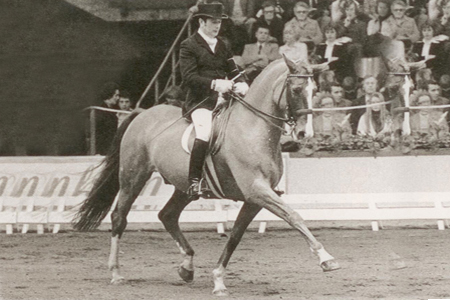
What is the most beautiful dressage horse I ever saw? There were many many horses. I saw one at Hickstead Herbert Rehbein with Liostro, the horse was in perfect balance, light in the hand, the collection was perfect, the extension was slow, everything was how it should be. It was a bit like a dream. That was the best test, everything was smooth and fine…
Georg Theodorescu has a passion for the purity of movement. When I conducted this interview back in 1999, Monica had a then eight-year-old grey Trakehner mare, Renaissance Fleur. The pair were to go on a star in Grand Prix, particularly in the Freestyle, before Fleur was tragically injured and had to be put down.
While we talked, Fleur was in the arena and Georg stressed that while she might not be the biggest mover he had ever seen, she had such regularity and rhythm in all three gaits – at the beginning of a working session or at the end, it was always the same… on a straight line or a half pass, there was no change, and with the work the extravagance would come. And indeed as we were to see before the session finished, it had already arrived.
But it is the little things, the observations of a lifetime watching and working with animals that made Georg’s insights so unique. As Monica brought the mare to a perfect halt, I asked Georg how he schools a horse to stop square. The reply?
“Not with punishment, but repetition, and talk to him, when he stands correctly, talk to him and he will learn, and then you will often see him move his eyes like this…”
And Georg blinks his eyes together, just like a happy horse.
story continues below the advertisement
“When horses are young, the number one thing to remember is that they are children. Of course they have to get used to the weight of the rider, and that is more than enough for that age. They have to get the equilibrium, the balance, with someone on their back. The minute the rider gets on, the horse has lost his balance. Okay, he is alright in walk – but how is the canter and the trot? And everyone expects this poor young horse to dance, and it is much too early.”
“I never agree with the use of the word ‘dressage’ – you can dressage a pigeon to do tricks in the circus, for me it is education. It is education just like a child. With a child you take care of their education, and that is physical as well as the mental education. I am old fashioned, as they said in Latin, a healthy mind in a healthy body.”
“When they are young I like to see them ridden outside with an older horse. But you have to teach them first in the stable, to know you, and know your voice. They have a lot of feeling, more than we have. They feel when you come into an indoor school – even though I have rubber on my shoes, and you can’t hear anything – they know before us. You have to teach them to trust us. Trust my voice, then trust another horse in the stable that they know, who is a bit older. The horse in the stable needs a horse that is his friend, just like when you send a little child to school, he needs a friend to take care of him.”
The theme of talk to the horse, was a constant one. Georg does not like to see his horses tied in the stable. They stand free in the middle of the passage way to be tacked and untacked, and happily follow him into their stable – (this, perhaps, not entirely uninfluenced by his pocket full of carrots). Standing free this way, the handler has to talk to them. Similarly, he likes them to be taken out for a pick of grass in the afternoon, but again, with a groom – then they talk.
Monica and Fleur enjoy a walk and a pick of grass…
“The education is always serious. The horse has to learn discipline, they have a lot to learn when they are young. To learn to stand still where I put him, to be washed – they even have to learn to eat and drink. That’s why we don’t have automatic waterers. With 45 even 50 horses that is a lot of buckets, and in summer they get more water at 10 o’clock at night, but I don’t like these automatic things. If you don’t have time for the animals, it’s better not to have them. The water must be fresh – and with these automatic drinkers, they get hay and oats in the water, and it goes sour and smells bad, who wants to drink from that?”
“Then the boys who bring the water must be friendly to the horse. They must know how much they drink, how fast, there are a thousand things you can learn just taking care of the horse.”
“I hate everything automatic with horses. I hate these horse walkers. We had one here on this farm when we came, but we turned the automatic walker into a garage for the cars.”
“Automatic things don’t fit with horses, they don’t need machines, they don’t need buttons, they need people. They need someone to talk to them, to tell them when they are good and bad. They know exactly when they are good, they are not stupid. They are animals, but intelligent animals.”
“The most important thing is to know is what kinds of exercises you need to use put the horse into balance. The front half of the horse is very much heavier that the back part. If the horse is 480 kilos, he is 280 kilos in the front and 200 in the back. Now we have to put them in a balance, which means we must send to the back, the weight from the front, and then we have to consider the weight of the rider.”
“You can’t just send this weight to the back with your hand, because you don’t know if the horse is strong enough to take the weight. You must know the horse exactly, to know when he is strong enough.
If someone takes me into the indoor school, and says ‘here’s 100 kilograms weight, lift it up’, he can hit me until tomorrow morning, I cannot lift it up. It’s not because I don’t want to, I can’t. So the guy comes every morning, takes me into the school and the same weight is there, and he keeps beating me. Soon I don’t sleep, I don’t eat…”
“We have to take care if we love our horses not to make them suffer. All the movements in the High School, they are natural movements. When does the horse do passage in the field? When they are happy! Sometimes you see the rider pulling and pulling, spurring and spurring, that’s not passage. You dance when you want to dance, not when they hit you to dance.”
Ganimedes – Olympian and multi-medal winner with Monica
“The horse has to develop also his mind, because he is an artist. When you take the horse in front of the public, they know that they are on show. All the horses on this place, they come to my voice, even if there is a bereiter on them! Sometimes I don’t need to call them, they just come to me. It is better if you start at the beginning with the horse as your friend, and then it is my fun too.”
“My grand-father taught me, he had lots of Thoroughbreds – and lots of children. Twelve children, and there were lots of grand-children and they all came to his farm in summer, and everyone wants to ride. I was about five and I said, I want to ride too. He gave me a little grey mare and said you have to teach her to come to your voice. When you can do that, I’ll give you a bridle and saddle. After five or six days she would come when I called and I got my saddle. That was my first lesson.”
In the indoor, as Georg talks, Monica’s training session is in full swing. The mare does move so beautifully, keeping the rhythm through all the paces, all the movements, but she has a bee in her little grey bonnet, right from the first counter canter through the corner, she says ‘I want to do a flying change, I want to, and I’m going to, and NOW!”
Fleur and Monica parading at the Bundeschampionate as Burg Pokal winners
The correction is controlled, immediate, and firm without even a hint of aggression. As Monica explains later, it is all part of her philosophy of training:
“My grey mare, you don’t ask her too much, or force her to do anything, otherwise she gets too tense and and throws her legs too much, instead of moving the way she should. The work I did today was normal work, I didn’t hide anything or ride her to show her to you. I rode my normal work to prepare her for her first Prix St Georges this weekend. There are no tricks, it’s classical riding, according to the classical principles, and that’s the only magic about it, it is very logical and quite simple.”
“If you try tricks, you will have horses that do tricks, but they don’t move like dressage horses should move.”
“With this mare, it is easier because she is made for dressage, that is what we need for dressage, this kind of horse. She also jumps fantastically – eventers and jumpers would like to have her too. She’s definitely not easy in her mind because she is a mare, and also she has a lot of Thoroughbred blood. But that is the only problem we have to deal with. Every horse needs different care and different work. Not completely different work, I work always on the same principles, the classical principles, but still there is one horse that is more spooky, one that is a little slow in his mind, some anticipate – those are the things we have to deal with, not how do I teach him some tricks.”
“Fleur is not afraid of anything, she is a bit bitchy. With her you can say ‘come on now, that’s enough’. You cannot hit her so she gets afraid, but if you let her, she will take advantage. You have to understand their characters and when it is time to stop working.”
It is very important to understand that Georg and Monica are two quite separate people, and woe betide Dad if he should try to interfere with his daughter’s horses:
“I always wanted to work my horses by myself. It was worse when I was younger. My father would say ‘come on, I’ll help you’ and I’d say ‘get out of it, it’s my horse and you don’t get to ride it’. Now I still ride them myself, but sometimes at the weekend I will let one of the girls exercise them, before I would never have let anyone touch my horses.”
Monica and Whisper at the Europeans in Windsor
The new wave of young female riders who train their horses is welcomed by Georg:
“Dressage is better now, there are more riders, young people, young girls work horses from nothing to Grand Prix. They do it themselves. I am sure no-one rides the horses of Isabell Werth. Monica’s horses I never sit on, she doesn’t like it.”
Monica, Isabell Werth and Heike Kemmer on the cover of The Horse Magazine in 1991. All three are still prominent in the sport: Monica as German Team Coach, Isabell as Team Member and medal winner – including the recent Tokyo Games, and Heike as coach of many currently successful riders.
Monica and Heike discussing test results at a recent Aachen
Monica congratulates Isabell after a test at Aachen
“Sure she has problems, everyone has problems, but she fixes them, and never with draw reins. Draw reins are not allowed in our stable, no discussion, here it is not allowed.”
As you drive into the courtyard at the Theodorescu training yard, the heads looking over the stable doors are like a mini hall of fame, but even in retirement, the stars of the past are treated like VIPs.
All the horses that come to Theodorescus stay in the same stable throughout their careers, even when they are retired, for no horse is put down unless it is in pain.
Each day, the 26-year-old Corrado and the 19-year-old Ganimedes, are led from their stables, on opposite sides of the block, to their paddock, and whichever arrives first at the spot where their paths meet, stops dead and will not budge until his pal has joined him. “Even in the snow, ” George says, his smile wrinkling all over his face with happiness at the thought, even in the snow, they play like foals. And that says a great deal about dressage training the Theodorescu way…




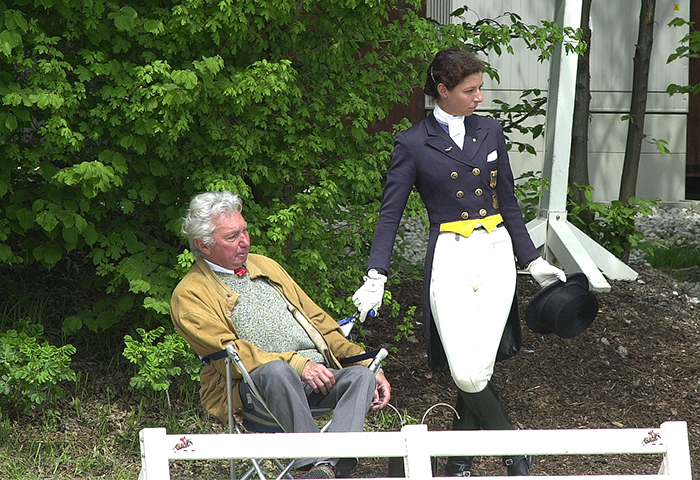
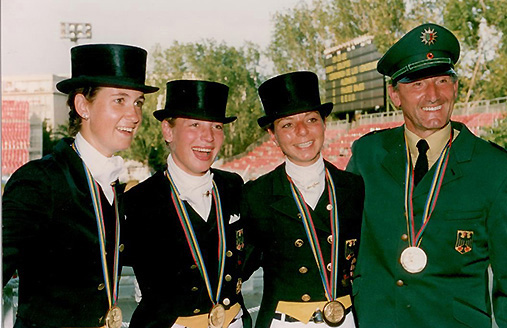
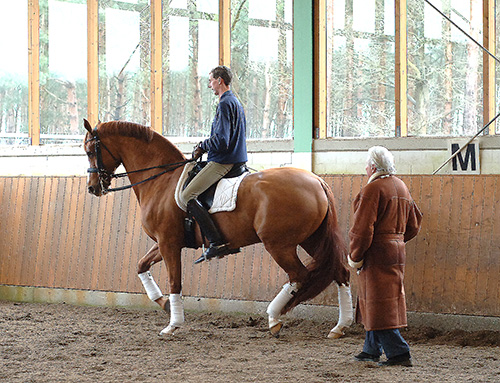
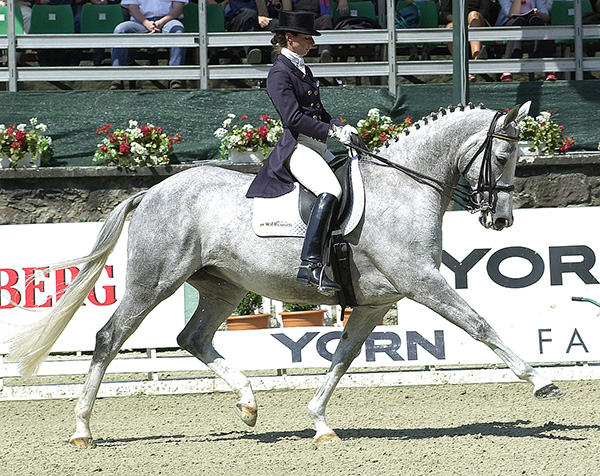
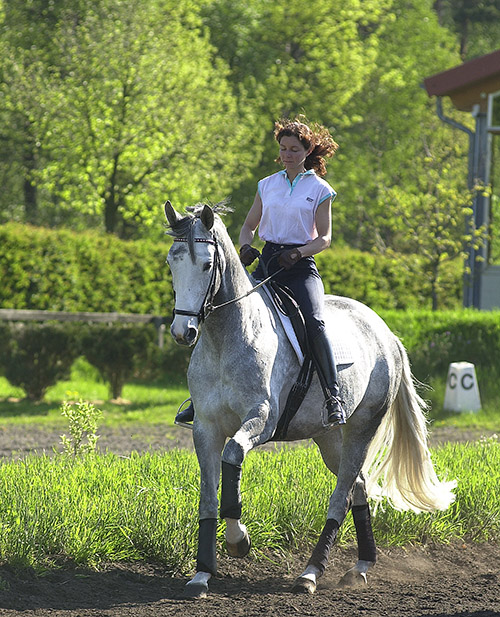
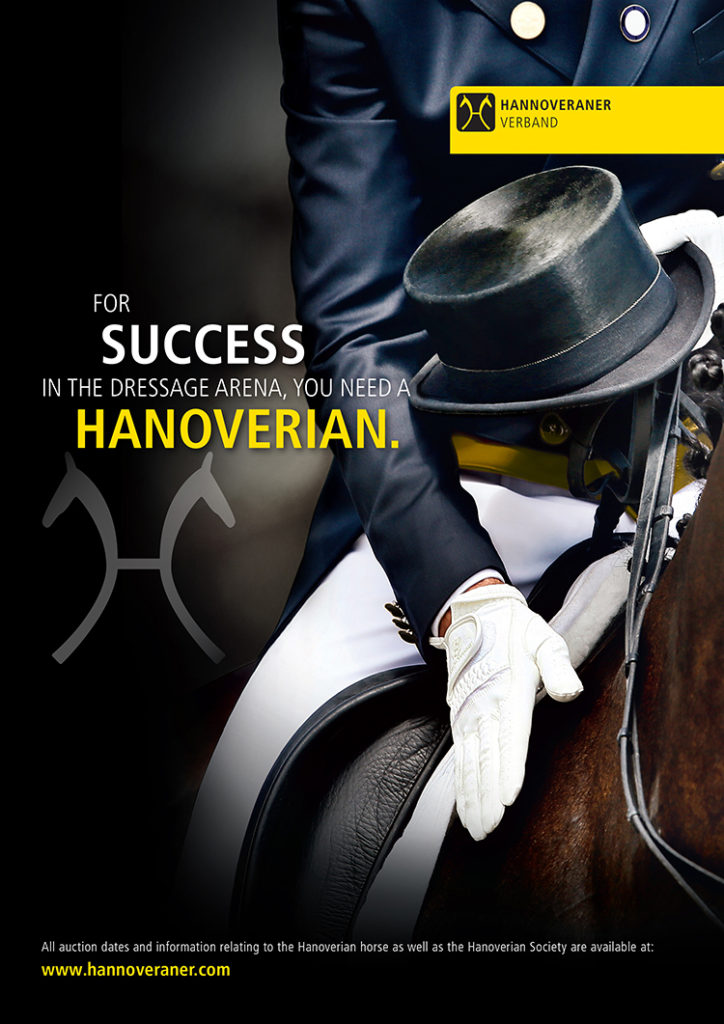
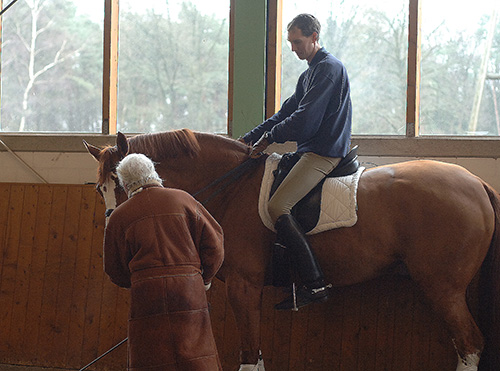
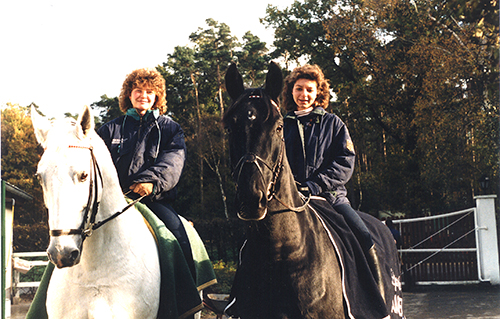
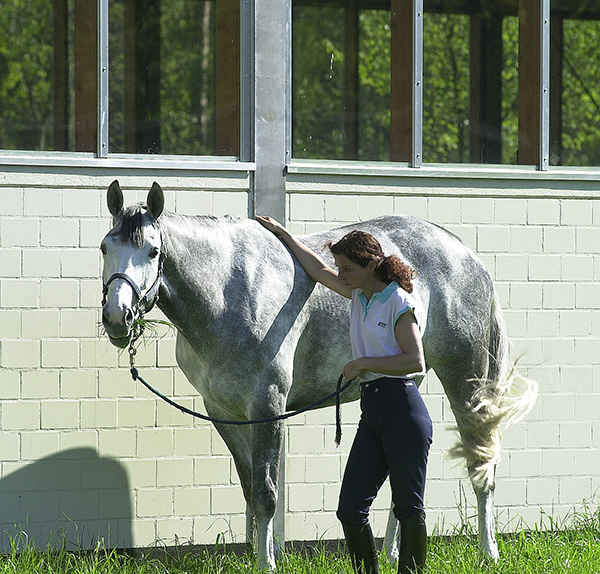
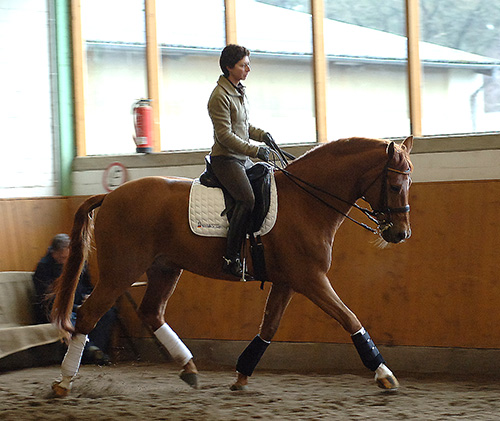
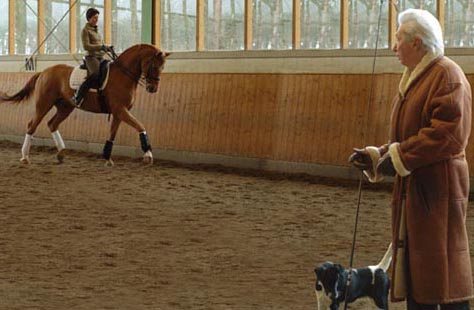
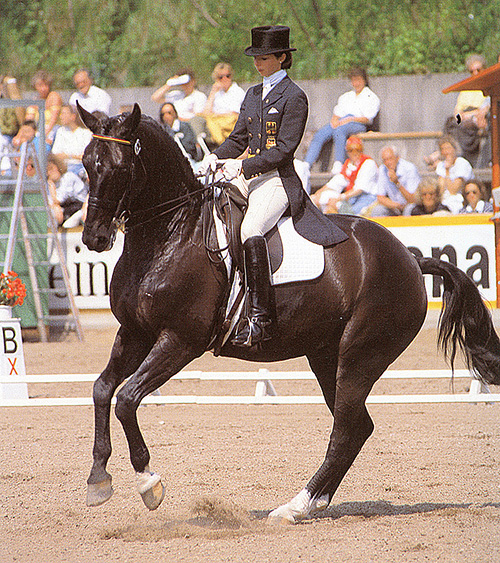
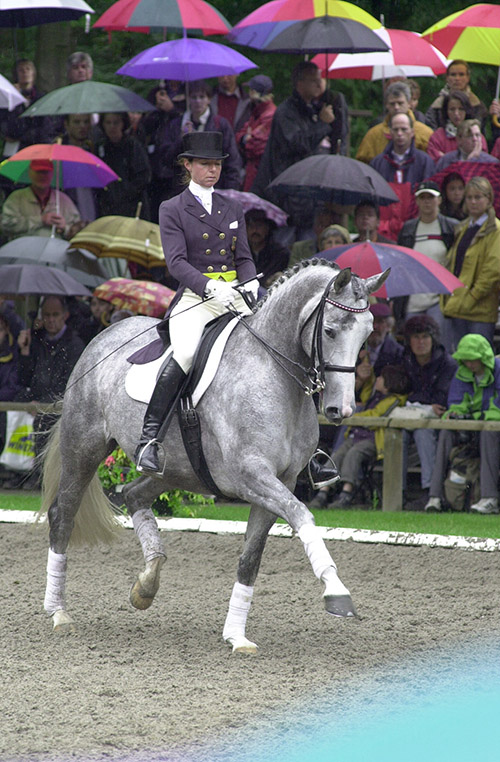
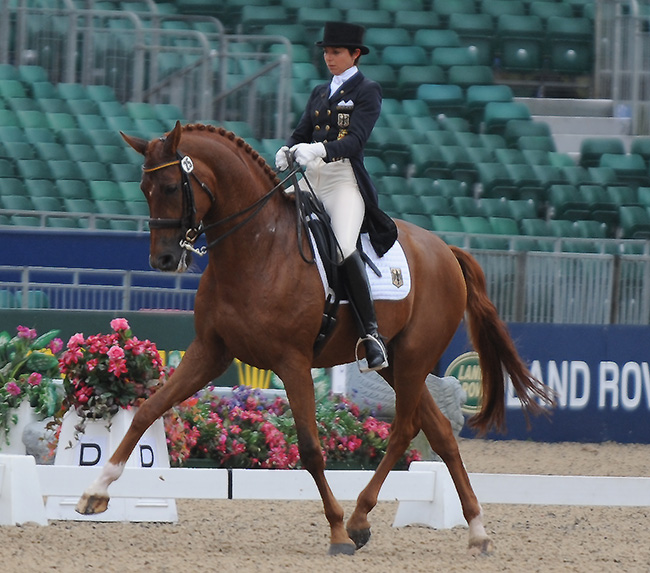
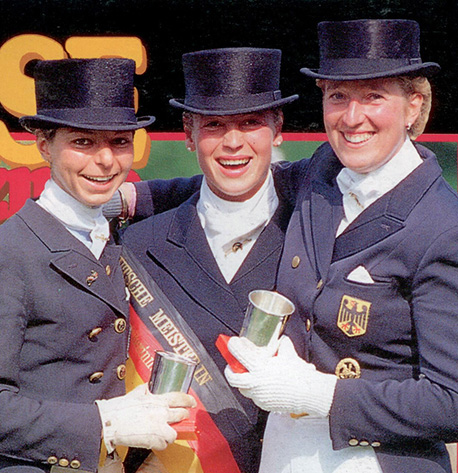
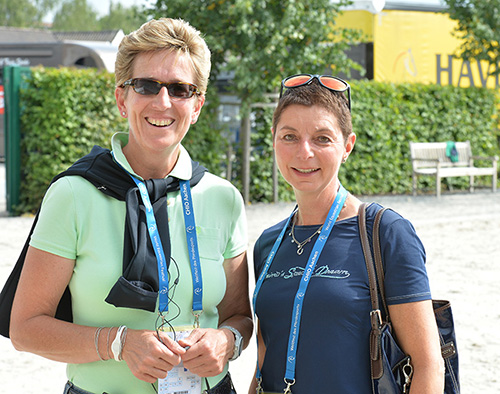
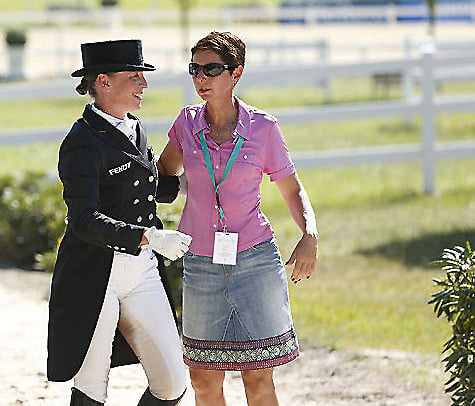
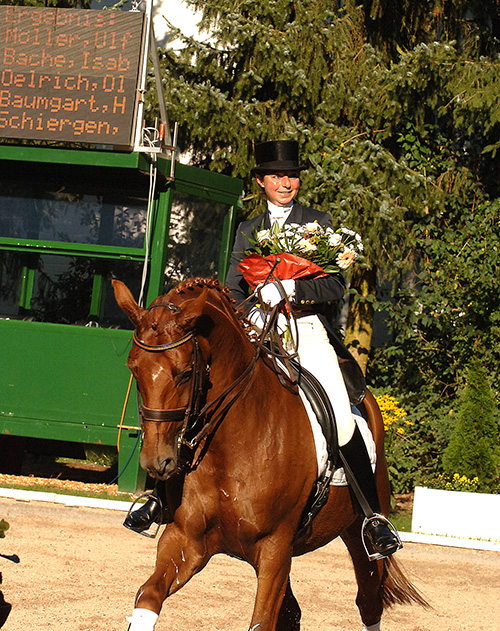
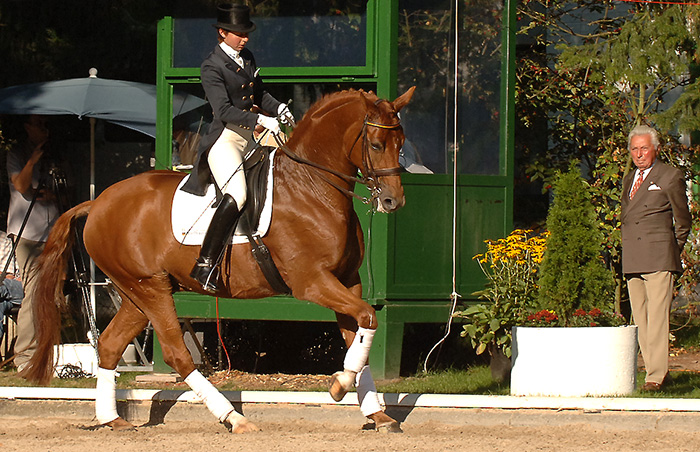
Terrrrrific article – it should b compulsory reading for riders Trainers and judges in all 3 disciplines
Brilliantly conveyed – thank u
This was a article that gave me chills. I would have loved to have known this man. ❤️
I treasure the time I was lucky enough to spend with him… Chris Hector
Hello Chris, Loved this article, as it put in words so much of what I believe is the way it should be with all horses. Thank you.
Love the last picture and caption…Monica has had a wonderful life and career. I have enjoyed her book, “Classical Schooling with the Horse in Mind”, for many years.
How lucky those horses were! Id have given my right arm to just watch him with his horses. So much could
have been learned with no words.
Loved the article thanks Chris
Wonderful and enlightened reading. I soaked up every word and I will read it again. Thank you for sharing this.